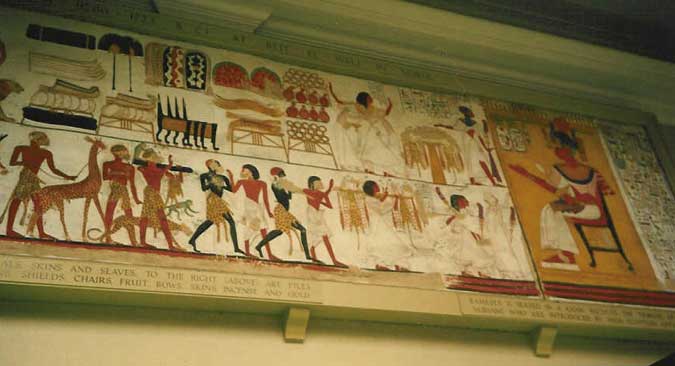Ancient Egypt is probably one of the most mysterious and exciting chapters of the world history. Thousands of years of development of this country gave the world important scientific discoveries, and cultural advancements. The art of Egypt is represented by the world of giant pyramids and miniature sculptures, full of contrasts and harmony simultaneously.
There is no comparison of the art of ancient Egypt to any other art trends in the world history. When you see the pyramids, the mixture of emotions is so powerful that you wonder how it was humanly possible to create something so grand. Many researchers have tried to discover the secrets of the magnetism of Egyptian art, and there is only one answer – it has to be seen, one has to get close to it in order to understand or at least try to understand it, to feel it. There is calculated harmony in Egyptian sculptures and paintings, in its architecture.
It would be impossible to understand Egyptian art without understanding the rich history of this country that opens to the visitors when they come to the Giza pyramids or to Luxor and Karnak.
One has to respect the fact that the artists of Ancient Egypt believed in the myths and legends. That belief gave them the power to create immortal art. Today’s society may be skeptical about the belief system of Ancient Egypt, such as life after death. What is amazing is that this belief system was supported by nothing other than tyranny, where people were slaves and it enabled the government to create the threatening machine. It is a well-known fact that Ancient Egypt was a despotic state and a lot of monuments of Egyptian art were nothing more than the ode to the power of pharaohs.
Tutankhamun
Golden mask of Tutankhamun is striking in its beauty and realism. Its size is 540 millimeters or 21 inches. It is made of gold but when you look at it, it feels that the young pharaoh’s skin is warm and he is almost alive, so realistic is the depiction. The name of the artist, who created it, is unknown, but its genius will exist as long as the mask is seen by constant stream of visitors. The king was a young man. Half-god, half-man with the power to take other people lives. He was the last pharaoh of the 18th Dynasty and died before turning 20 years old. The reason of his death is not known.
Nefertiti
Nefertiti was the royal wife to the pharaoh Akhenaten. Together with him they started a sort of revolution where only one god Aten (sun disc) was worshipped. Her name is translated as “beautiful has arrived”. Her bust is another famous work of Egyptian art. It survived for over thirty three centuries and will continue exhibiting its beauty to the generations to come. Perfectly feminine, young and wise, fragile and beautiful, her look will captivate the audiences making them wonder what her life was like. Half-goddess, she was just a mortal.
Pyramids
Egyptian pyramids are the most famous in the world. Giza Pyramid is the largest in Egypt. When you stand near you feel fragile and small like a grain of sand. Then you realize that they were created by fragile humans, then you wonder how many have died while these magnificent structures were constructed. Every visitor to Egypt tries to see the pyramids. These places are full of tourists and merchants trying to sell souvenirs or give camel rides. And yet the noise of the surroundings disappears when one is in the presence of such powerful greatness. One never forgets the realization of being touched by history, by the unknown, by the immortal power of human expression.
Egyptian art is mysterious. It represented a type of governmental propaganda documenting the battles and victories, making the pharaohs immortal, creating symbolic art. With that, its genius will remain immortal.

